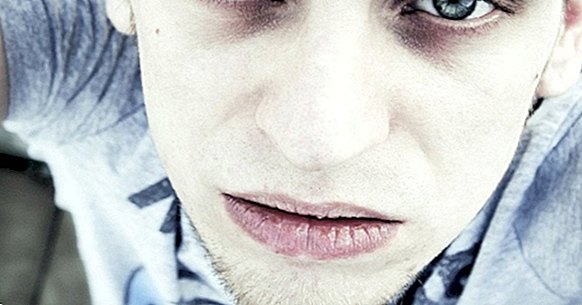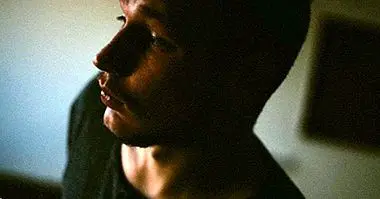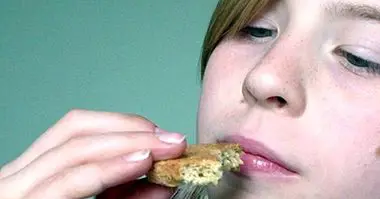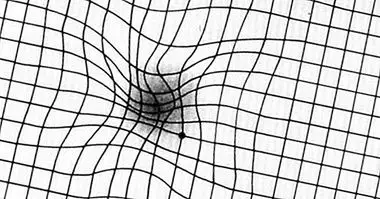The farce of Selfitis: taking selfies is not a mental disorder
Attention:
Social networks have recently spread false information : the APA, it was said, had included a disorder called "Selfitis" which referred to the obsession with taking selfies with the mobile phone. Although it is true that there are people who are too obsessed with wanting to show a good image of themselves in the networks, the truth is that On the part of the American Psychiatric Association there has been no mention of this alleged disorder .
In order to be able to do pedagogy on this issue, we have compiled the article "hoax" that has been the object of so much attention and controversy.
Have you ever thought what does your profile picture of Facebook, Twitter, Instagram ? What's the point of uploading all those self-portraits daily to your social networks?
From people with a normal life to celebrities such as Angelina Jolie, Kelly Brooks, Lana del Rey and Kim Kardashian upload daily photos and self-portraits of their daily lives. Many will think that these self-portraits have no meaning, but according to the American Psychiatric Association (better known by its acronym in English APA) during their annual meeting, held in Chicago in 2014, people who take selfies compulsively can suffer a mental disorder called "Selfitis", and according to APA this compulsive act of taking self-portraits is given by that lack of self-esteem and to fill a vacuum in privacy.
Research on the Selfitis
In 2013, Nadav Hochman, Lev Manovich and Jay Chow analyzed two million photos from the social network Instagram, which were collected in five different cities of the world. The analysis of these photos yielded relevant information, such as female people within the range of 23 to 25 years of age are the ones who take the most selfies . Another curious fact is that women in the Brazilian city of Sao Paulo are the ones who smile the most and turn their heads on average by 16.9 degrees when taking a self-portrait, when the average of all countries does not exceed 12 degrees. As we can see, it was a study of an exhaustivity almost to the point of absurdity.
But this does not mean that men are exempt from suffering from this disorder, since there is a good percentage of men who compulsively take this type of self-portraits.
An investigation by psychologists yielded other revealing data about Selfitis. For example, it was learned that the more selfies a person takes and disseminates through social networks, the more damaged their relationship with friends on social networks tends to be. Therefore, we can conclude that people who believe that taking dozens and dozens of selfies and uploading them to social networks will achieve more popularity and friendships, they are wrong .
How to identify a person with Selfitis?
To diagnose a person with Selfitis, it is not only taken into account that a person takes a selfie. The fact that a self-portrait is taken out from time to time is not a sign of a pathology. So that we can talk about Selfitis, the amount of selfies must be significant during the day, pHowever, the compulsion to share these photos in their social networks is also taken into account .
A person with Selfitis can get to take more than three self-portraits per day and share the same photo more than twice in different social networks like Instagram, Twitter and Facebook. The fact that he gets to copy poses of people who got a lot of social repercussion in his photos is also an identification of the disorder, and he can get to experience anxiety and depression if his selfie did not obtain the like expected.
The phases of Selfitis
According to the APA, there are 3 stages or phases of Selfitis that are the following:
- Borderline selfitis : the person only gets to take a minimum amount of three selfies a day, but without sharing them on social networks.
- Acute selfitis : the subject takes self-portraits at least three times a day, and then share each of them on social networks.
- Chronic selfitis : occurs when the person feels an uncontrollable impulse to take selfies during the whole day, as well as to share said photos on social networks more than six times a day.
Treatment for obsession with selfies
At the annual meeting of the APA it was concluded that the best possible treatment for Selfitis goes through Cognitive Behavioral Therapy (CBT).
A problem that should make us reflect
The underlying problem that we observe with the obsession with selfies is not exactly the fever of smartphones, but the culture of the image . What does it reveal to us that a teenager spends hours taking pictures and then showing them on social networks? In many cases, it may indicate poor self-esteem and the need to feel accepted by others.
In this sense, Selfitis is the tip of the iceberg of a problem that is not strictly psychopathological but is related to the values that prevail in our society, a society in which aesthetics and personal relationships take on a central role in self-image of the teenager. Taking selfies does not necessarily mean that there is a psychological problem behind , but in some cases it can be an unequivocal symptom that something is not quite right.



















